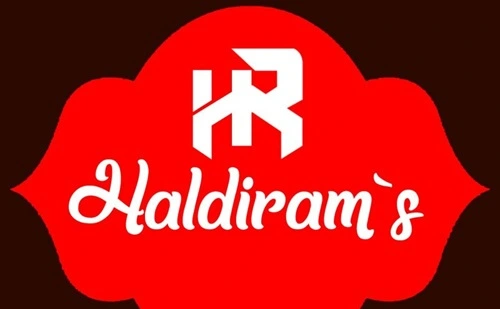Haldiram, a household name in India and one of the largest producers of Indian snacks, started in Bikaner, Rajasthan, in 1937. Over the decades, the company has become synonymous with traditional Indian snacks such as namkeens, sweets, and bhujias. As of 2024, Haldiram continues to expand its product range and reach, cementing itself as a dominant player in the global ethnic food market. However, the competitive food industry, evolving consumer preferences, and health trends necessitate a deep analysis of its strengths, weaknesses, opportunities, and threats (SWOT).

Haldiram Current Overview
Haldiram stands as a leader in the Indian ethnic snack industry, holding around 50% of the market share in the organized segment. The company offers an extensive portfolio, including traditional snacks, ready-to-eat meals, and desserts. With products exported to over 80 countries, Haldiram has a strong international presence. However, its core markets remain in India, where it dominates the northern regions. Despite facing strong competition from both local brands like Bikaji and international players, Haldiram continues to maintain a loyal customer base due to its consistent quality and authentic flavors.
Future Plans
Looking forward, Haldiram aims to expand its footprint internationally and explore new markets in both established and emerging regions. The company is also considering tapping into the growing health-conscious demographic by introducing healthier versions of its traditional snacks. Additionally, Haldiram is rumored to be exploring IPO options, which could provide the capital for aggressive expansion and innovation. Strengthening its digital presence through e-commerce platforms is another strategic focus, ensuring it remains accessible to a broader audience globally.
Haldiram SWOT Analysis
Strengths
1. Brand Loyalty and Recognition: Haldiram has established itself as a trusted brand across India and internationally. Its reputation for high-quality, flavorful snacks has earned it a loyal customer base.
2. Extensive Product Portfolio: From namkeens and sweets to ready-to-eat meals, Haldiram offers a wide variety of products, catering to diverse consumer preferences. This product diversification mitigates risk and boosts its revenue streams.
3. Strong Distribution Network: Haldiram’s extensive supply chain ensures its products are widely available, both in India and globally. This allows it to maintain a competitive edge in the fast-moving consumer goods (FMCG) sector.
4. Packaging Innovation: Haldiram has been a pioneer in introducing modern packaging techniques that not only preserve product quality but also enhance its visual appeal. This attention to packaging further strengthens its brand positioning.
Weaknesses
1. Limited Focus on Health: As consumer preferences shift towards healthier options, Haldiram’s traditional snacks, which are often high in calories and fat, may lose appeal among health-conscious consumers. The company’s current product line lacks sufficient offerings that cater to this growing market.
2. Geographical Concentration: Haldiram’s physical outlets are predominantly located in northern India, limiting its reach in other parts of the country. This geographic imbalance could be a disadvantage as the company faces increasing competition from pan-India and international brands.
3. Seasonal Sales Dependency: A significant portion of Haldiram’s revenue comes from sales during festive seasons, especially from sweets. This dependency creates fluctuations in revenue, making the business more vulnerable to seasonality.
Opportunities
1. Expanding Healthier Product Lines: Haldiram can tap into the growing demand for healthy snacks by introducing low-fat, low-sugar, and gluten-free alternatives. By innovating its product offerings, the company could attract a new demographic of health-conscious consumers.
2. E-commerce and Digital Expansion: Strengthening its online presence through partnerships with e-commerce platforms could significantly boost sales, particularly in regions where physical stores are not easily accessible. A dedicated focus on digital marketing could enhance customer engagement.
3. International Expansion: With increasing global demand for ethnic snacks, Haldiram has substantial growth potential in international markets. By entering untapped markets and expanding its product range, the company can strengthen its global footprint.
4. Innovation in Ready-to-Eat Meals: Expanding its ready-to-eat product line can help Haldiram capitalize on the growing trend of convenience foods, particularly in urban areas where consumers seek quick and easy meal solutions.
Threats
1. Increasing Competition: Haldiram faces growing competition from both domestic brands like Bikaji and international giants. These competitors often bring innovation and aggressive marketing strategies, which could erode Haldiram’s market share.
2. Health Perception of Traditional Snacks: Traditional Indian snacks are often perceived as unhealthy due to their high fat and calorie content. This negative perception could deter a large segment of consumers, especially as health awareness increases.
3. Rising Raw Material Costs: Fluctuations in the price of key ingredients, along with inflation, can squeeze profit margins. The company needs to manage its supply chain effectively to mitigate this risk.
Conclusion
Haldiram remains a dominant force in the Indian snack industry, leveraging its strong brand reputation, product diversity, and vast distribution network. However, it faces critical challenges in adapting to health-conscious consumer trends and maintaining competitiveness in an increasingly crowded market. By addressing its weaknesses—particularly in health-focused innovation—and capitalizing on growth opportunities, Haldiram can solidify its leadership in the snack food industry both in India and internationally. With strategic planning, including its potential IPO, the company is well-positioned for future growth and success in 2024 and beyond.